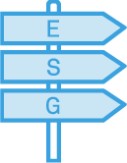Topics addressed in this section:
> Innovation for lower-impact products
> Low-impact raw materials
> Greenhouse gas (GHG) emissions
> Health and safety

The 9 LCA impact categories explained:
Climate change: Climate change occurs when new lasting weather patterns emerge as a result of changes in the earth’s climate. Global warming is a critical factor within this impact category.
Abiotic depletion: Abiotic depletion is the use of non-renewable material resources like earth minerals, metal ores, and fossil fuels, beyond their natural rate of replacement.
Land use: Land-use change is a pervasive driver of global environmental shifts. It includes all human activities and arrangements that harness terrestrial ecosystems.
Water consumption: Water consumption is an important indicator of the environmental footprint of products and services.
Eutrophication: Eutrophication refers to the potential of water to become overly enriched with minerals and nutrients, which can lead to the excessive growth of algae (algal bloom) and reduced or insufficient oxygen below the water's surface (hypoxia). This ultimately can lead to a decrease in biodiversity.
Acidification: An increase in the concentration of acidic elements can lead to a change in the chemical balance of natural systems. This is called acidification. The major cause of acidification is the deposition of sulfur, nitrogen oxides, and ammonia that are present in the atmosphere, otherwise known as acid rain. Acidification can lead to a decrease in biodiversity, damage to forests, corrosion, and human health issues.
Toxicity: Toxicity refers to the ability of a substance to produce an unwanted effect when it has reached a sufficient concentration within the body of a person or an animal. If a product has higher toxicity, a smaller concentration is necessary to cause harmful effects.
Photochemical ozone formation: The formation of ozone in the troposphere, the lowest level of the earth's atmosphere, is caused by the photochemical oxidation of volatile organic compounds (VOCs) and sunlight. High concentrations of ozone can damage vegetation, human respiratory tracts, and manmade materials through its reaction with organic compounds.
Ozone depletion: The release of chemical compounds containing gaseous chlorine or bromine gradually thins the earth’s ozone layer in the upper atmosphere.


Back to overview

Scroll
down
Stahl NuVera®
Stahl Ympact®
Stahl Relca® Bio
Renewable (raw) materials
Stahl is committed to eliminating unwanted substances from the supply chain. In 2022, 2088 products (73% of our total sales revenue) met the ZDHC highest compliance level (level 3).
Making our products safe
We aim to have LCA data for 300 products by 2030. We are on track for this target, with LCA data available for 160 products at end-2022.
Assessing the impact of our products
Stahl BeTan®
Stahl NuVera®
Stahl Ympact®
Stahl Relca® Bio
Stahl EasyWhite Tan®
Innovation and low-impact technologies
By offering our customers lower-impact chemical solutions, we can help them to reduce their carbon footprint, as well as their water and energy consumption. These benefits are also passed on to the end consumer. We devote significant resources to innovation: in 2022, 31% of our R&D projects had an ESG focus (up from 28% in 2021). Much of our recent innovation activity has been focused on replacing fossil-based raw materials in our products.
Developing low-impact technologies
Stahl NuVera® – renewable carbon-based polyurethanes for specialty coatings
Stahl BeTan® – a complete range of low-environmental-impact solutions for every step in the leather tanning process
Stahl EasyWhite Tan® – a low-impact leather-tanning solution
Stahl Ympact® – a family of renewable carbon solutions for leather processing and finishing
Stahl Relca® Bio – bio-based polymers for coatings and inks
Continuous innovation is a key driver of our growth strategy, and is channeled through our research and development (R&D) activities. In 2022, we opened a new R&D laboratory at our site in Portão, Brazil, which focuses on developing low-environmental-impact materials for our products. This strategic investment also supports our efforts to recruit new talent within our industry to drive innovation.
In recent years, Stahl has introduced the following low-impact product ranges:
Renewable (raw) materials
In 2022, 206 Stahl products contained more than 5% renewable content, representing 5% of total sales. These include Stahl NuVera® and Stahl Ympact®, which have a minimum renewable carbon content of 25%.
Transitioning to renewable feedstocks is a strategic pillar at Stahl, and our R&D approach is increasingly focused on the use of low- or renewable-carbon raw materials to help reduce the environmental impact of our products and enable our customers and end-users to reduce their own footprint. Our renewable feedstocks include plant-based biomass, derived mainly from corn, sugar, and vegetable oils. We also use captured carbon, a process that captures CO2 released from industrial processes and uses it as a feedstock to develop polymer building blocks.
Ensuring product safety for our customers
Ensuring the safety of all our stakeholders is a priority at Stahl. This includes phasing out harmful substances. As part of this commitment, we participate in the ZDHC Gateway platform, the leading sourcing tool dedicated to enabling safer chemical choices for the textile, apparel, and footwear industries. Chemical formulators that join the ZDHC Gateway play a vital role in driving the fashion and apparel industry’s adoption of safer chemical management practices. Products that meet the requirements of the ZDHC’s Manufacturing Restricted Substances List (MRSL) are published on the Gateway platform and product performance is tracked.
In 2022, Stahl achieved ZDHC Level 3 status (the highest level) for 2,088 products in its portfolio – an increase of 29% compared with 2021. ZDHC Level 3 products already represent 73% of the sales revenue of Stahl's Product portfolio (toward our target of 80%), and over 90% of our leather chemicals sales.
Stahl uses life cycle assessment (LCA) methodology to calculate the environmental impact of our products. Our strategy is to use the LCA methodology to:
Provide LCA data for 300+ strategic products by 2024;
Build a database of environmental impact data for our product portfolios;
Build a Carbon Footprint database for our strategic products;
Develop and exchange relevant LCA data with clients as input for their environmental impact calculations;
Provide technical support for clients on LCA data collection for their own processes and products; and
Manage (and reduce) our reported Scope 3 greenhouse gas (GHG) emissions using LCA data.
(LCA) approach
ESG Roadmap to 2030

Goal: ZDHC Gateway-certified products as a % of total portfolio sales revenue
2023: 80% of fashion, garment and footwear-related sales revenue from certified products
2030: 100% of fashion, garment and footwear-related sales revenue from certified products
In order to assess as many products as possible, we are continuously optimizing our methods for life cycle assessments. Our aim is to improve the efficiency of the process and the quality and accuracy of the data obtained from these assessments. We are also working to build our competencies across the business, so that "life cycle thinking" becomes embedded in our day-to-day activities.
In 2022, we completed life cycle assessments for 160 strategic products, meeting our target for the year. These assessments provided better data for our Scope 3 emissions calculations. We have also fully internalized our LCA factory modeling and raw material modeling. As a result, Stahl is now able to perform LCAs in-house, strengthening the quality of our data. In addition, we have established a more efficient proprietary method for raw material modeling. Stahl is now on track to have an automated system to calculate GHG emissions more accurately and provide higher-quality LCA data to our customers.
During the year, we added a dedicated Life Cycle Assessment Manager to the ESG team. This is helping us to drive engagement on this important topic within the organization, as well as with our customers and other value chain partners.

ESG Roadmap to 2030
Our 2023 roadmap target is to collect and report complete LCA data for 300 strategic products.

Back
to top

Back to overview

Back
to top
The 9 LCA impact categories explained:
Climate change: Climate change occurs when new lasting weather patterns emerge as a result of changes in the earth’s climate. Global warming is a critical factor within this impact category.
Abiotic depletion: Abiotic depletion is the use of non-renewable material resources like earth minerals, metal ores, and fossil fuels, beyond their natural rate of replacement.
Land use: Land-use change is a pervasive driver of global environmental shifts. It includes all human activities and arrangements that harness terrestrial ecosystems.
Water consumption: Water consumption is an important indicator of the environmental footprint of products and services.
Eutrophication: Eutrophication refers to the potential of water to become overly enriched with minerals and nutrients, which can lead to the excessive growth of algae (algal bloom) and reduced or insufficient oxygen below the water's surface (hypoxia). This ultimately can lead to a decrease in biodiversity.
Acidification: An increase in the concentration of acidic elements can lead to a change in the chemical balance of natural systems. This is called acidification. The major cause of acidification is the deposition of sulfur, nitrogen oxides, and ammonia that are present in the atmosphere, otherwise known as acid rain. Acidification can lead to a decrease in biodiversity, damage to forests, corrosion, and human health issues.
Toxicity: Toxicity refers to the ability of a substance to produce an unwanted effect when it has reached a sufficient concentration within the body of a person or an animal. If a product has higher toxicity, a smaller concentration is necessary to cause harmful effects.
Photochemical ozone formation: The formation of ozone in the troposphere, the lowest level of the earth's atmosphere, is caused by the photochemical oxidation of volatile organic compounds (VOCs) and sunlight. High concentrations of ozone can damage vegetation, human respiratory tracts, and manmade materials through its reaction with organic compounds.
Ozone depletion: The release of chemical compounds containing gaseous chlorine or bromine gradually thins the earth’s ozone layer in the upper atmosphere.
(LCA) approach
By offering our customers lower-impact chemical solutions, we can help them to reduce their carbon footprint, as well as their water and energy consumption. These benefits are also passed on to the end consumer. We devote significant resources to innovation: in 2022, 31% of our R&D projects had an ESG focus (up from 28% in 2021). Much of our recent innovation activity has been focused on replacing fossil-based raw materials in our products.
Developing low-impact technologies
Stahl NuVera® – renewable carbon-based polyurethanes for specialty coatings
Stahl BeTan® – a complete range of low-environmental-impact solutions for every step in the leather tanning process
Stahl EasyWhite Tan® – a low-impact leather-tanning solution
Stahl Ympact® – a family of renewable carbon solutions for leather processing and finishing
Stahl Relca® Bio – bio-based polymers for coatings and inks
Continuous innovation is a key driver of our growth strategy, and is channeled through our research and development (R&D) activities. In 2022, we opened a new R&D laboratory at our site in Portão, Brazil, which focuses on developing low-environmental-impact materials for our products. This strategic investment also supports our efforts to recruit new talent within our industry to drive innovation.
In recent years, Stahl has introduced the following low-impact product ranges:

ESG Roadmap to 2030
Our 2023 roadmap target is to collect and report complete LCA data for 300 strategic products.
In order to assess as many products as possible, we are continuously optimizing our methods for life cycle assessments. Our aim is to improve the efficiency of the process and the quality and accuracy of the data obtained from these assessments. We are also working to build our competencies across the business, so that "life cycle thinking" becomes embedded in our day-to-day activities.
In 2022, we completed life cycle assessments for 160 strategic products, meeting our target for the year. These assessments provided better data for our Scope 3 emissions calculations. We have also fully internalized our LCA factory modeling and raw material modeling. As a result, Stahl is now able to perform LCAs in-house, strengthening the quality of our data. In addition, we have established a more efficient proprietary method for raw material modeling. Stahl is now on track to have an automated system to calculate GHG emissions more accurately and provide higher-quality LCA data to our customers.
During the year, we added a dedicated Life Cycle Assessment Manager to the ESG team. This is helping us to drive engagement on this important topic within the organization, as well as with our customers and other value chain partners.
ESG Roadmap to 2030

Goal: ZDHC Gateway-certified products as a % of total portfolio sales revenue
2023: 80% of fashion, garment and footwear-related sales revenue from certified products
2030: 100% of fashion, garment and footwear-related sales revenue from certified products
Stahl uses life cycle assessment (LCA) methodology to calculate the environmental impact of our products. Our strategy is to use the LCA methodology to:
Provide LCA data for 300+ strategic products by 2024;
Build a database of environmental impact data for our product portfolios;
Build a Carbon Footprint database for our strategic products;
Develop and exchange relevant LCA data with clients as input for their environmental impact calculations;
Provide technical support for clients on LCA data collection for their own processes and products; and
Manage (and reduce) our reported Scope 3 greenhouse gas (GHG) emissions using LCA data.
Ensuring product safety for our customers
Ensuring the safety of all our stakeholders is a priority at Stahl. This includes phasing out harmful substances. As part of this commitment, we participate in the ZDHC Gateway platform, the leading sourcing tool dedicated to enabling safer chemical choices for the textile, apparel, and footwear industries. Chemical formulators that join the ZDHC Gateway play a vital role in driving the fashion and apparel industry’s adoption of safer chemical management practices. Products that meet the requirements of the ZDHC’s Manufacturing Restricted Substances List (MRSL) are published on the Gateway platform and product performance is tracked.
In 2022, Stahl achieved ZDHC Level 3 status (the highest level) for 2,088 products in its portfolio – an increase of 29% compared with 2021. ZDHC Level 3 products already represent 73% of the sales revenue of Stahl's Product portfolio (toward our target of 80%), and over 90% of our leather chemicals sales.
Renewable (raw) materials
Transitioning to renewable feedstocks is a strategic pillar at Stahl, and our R&D approach is increasingly focused on the use of low- or renewable-carbon raw materials to help reduce the environmental impact of our products and enable our customers and end-users to reduce their own footprint. Our renewable feedstocks include plant-based biomass, derived mainly from corn, sugar, and vegetable oils. We also use captured carbon, a process that captures CO2 released from industrial processes and uses it as a feedstock to develop polymer building blocks.
In 2022, 206 Stahl products contained more than 5% renewable content, representing 5% of total sales. These include Stahl NuVera® and Stahl Ympact®, which have a minimum renewable carbon content of 25%.
Stahl NuVera®
Stahl Ympact®
Stahl Relca® Bio
Renewable (raw) materials
Stahl is committed to eliminating unwanted substances from the supply chain. In 2022, 2088 products (73% of our total sales revenue) met the ZDHC highest compliance level (level 3).
Making our products safe
We aim to have LCA data for 300 products by 2030. We are on track for this target, with LCA data available for 160 products at end-2022.
Assessing the impact of our products
Stahl BeTan®
Stahl NuVera®
Stahl Ympact®
Stahl Relca® Bio
Stahl EasyWhite Tan®
Innovation and low-impact technologies

